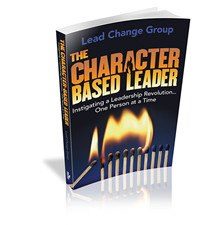In the 90’s I read The Seven Habits of Highly Effective People for the first time.

I immediately made my own infographic of the four quadrants and added the quotes below and put them in my purse and in my planner.
[Tweet ““Be a light, not a judge.” S.R. Covey”]
[Tweet “”Be a model, not a critic.” S.R. Covey”]
[Tweet “”Be part of the solution, not part of the problem.” S.R. Covey”]
Fast forward several years, I accepted a position with a growing company that was investing a SIGNIFICANT amount of time, energy, focus and money to give every employee at every level a vision of empowerment and ownership.
The team I had the honor of serving took “owning it“ seriously and consistently found ways to take greater and greater ownership of their work and of the business. (Ultimately exceeding their objectives and leading multiple change initiatives throughout the company.)
One of my favorite examples of how much they “got it” was the day an employee stood outside on a break and witnessed a customer in a wheelchair trying to get from the parking lot into the building.
- From the parking space, a curb blocked the sidewalk.
- So the customer wheeled from the parking lot into the street, and then into the U-shaped driveway in front of the building.
- From there curbs blocked the entrance to all three doors.
- So the customer wheeled through the U-shaped driveway and back into the street and then down to the next parking lot where all of the handicapped parking was full.
- There he finally had access to the one place the curb had been removed so he could access the sidewalk and the building.
This employee had several options:
- He could have helped the customer into the building and said nothing.
- He could have told stories about how foolish the company was not to provide better access to non-ambulatory customers.
- He could have reported it and then decided it was no longer something he needed to concern himself with.
This is what he did:
- In spite of the fact that this was clearly not in the scope of our department’s function, he told me about it.
- Then he went outside and took pictures of the entire walkway, and close up pictures of each curb.
- Then he put all of the pictures in a document and marked each spot that made wheelchair access into the building an impossibility.
- Then he emailed the document to me.
I shared his work feeling so proud of his caring, leadership and initiative.
The next part of the process took a little longer than it should have because…
[Tweet “Even in empowered environments, it can be challenging to lead up.”]
In spite of the time it took – today people with limited mobility have easy access to that business (from both parking lots and the u-shaped driveway) because he decided to be a part of the solution.
In the years that have passed since then I’ve worked and lived in places where people are continually presented with opportunities to own what they see.
- Some remain silent.
- Some complain.
- Some want to make a difference and don’t know how to lead up and out.
- Some try for awhile and then quit.
- Others keep trying and learn as they go… And our world is better because of them.
- Which one are you?
- Which one do you want to employ?
For those of you that fit the description of number 3 or number 4…
AND for those of you with leadership titles that wonder why more people in your organization don’t take ownership of things…
We offer a free download to help you learn how to lead change no matter where you sit.
Image credit: iStock





Being part of the solution is the only way to roll for leaders; otherwise we are just adding to the problem.
I recently presented an Accountability Training where we worked on finding ways to help others be more accountable. We realized that we can actually empower others to stop blaming and take responsibility. We can make a difference by reaching out.
Terrific points, Chery!
Terri – I could not agree more! I would love to hear more about the discussion that lead to that discovery…”We realized that we can actually empower others to stop blaming and take responsibility.”
On more than one occasion, I have stood by my policy: If I am not willing to be a part of the solution, then it must not be important. If I am not willing to invest my time, why would I think others would invest their time.
I love your posts. Even though I am no longer employed in the work force, I find applications to my everyday encounters.
Jane
Jane, That is a GREAT policy! Thank you so much for the feedback! It adds fuel to the fire in my belly!
Inspiring! A true example of the power of ownership and servant leadership. You served your team and you all served your customers… not nameless faces but real people who matter.
Thank you for sharing this story!
Thank you Alli! 🙂
Hi Chery
As I am about to embark on writing my own book, working title ‘The Empowering Leader’, your post provided a poignant springboard to other memories cached in my mind, for which I am eternally grateful!
I also loved the power and single-mindedness of that individual and the outcome … and impact his actions produced. Great story highlighting great lessons for us all.
Thank you for sharing.
Have a brilliant week ahead.
John
John – Thank you so much for the feedback! I’ve had lots of those experiences lately where someone else writes something that triggers a memory, situation, or learning and sparks my own creativity!
Have a great trip to Italy! I look forward to catching up when you return!